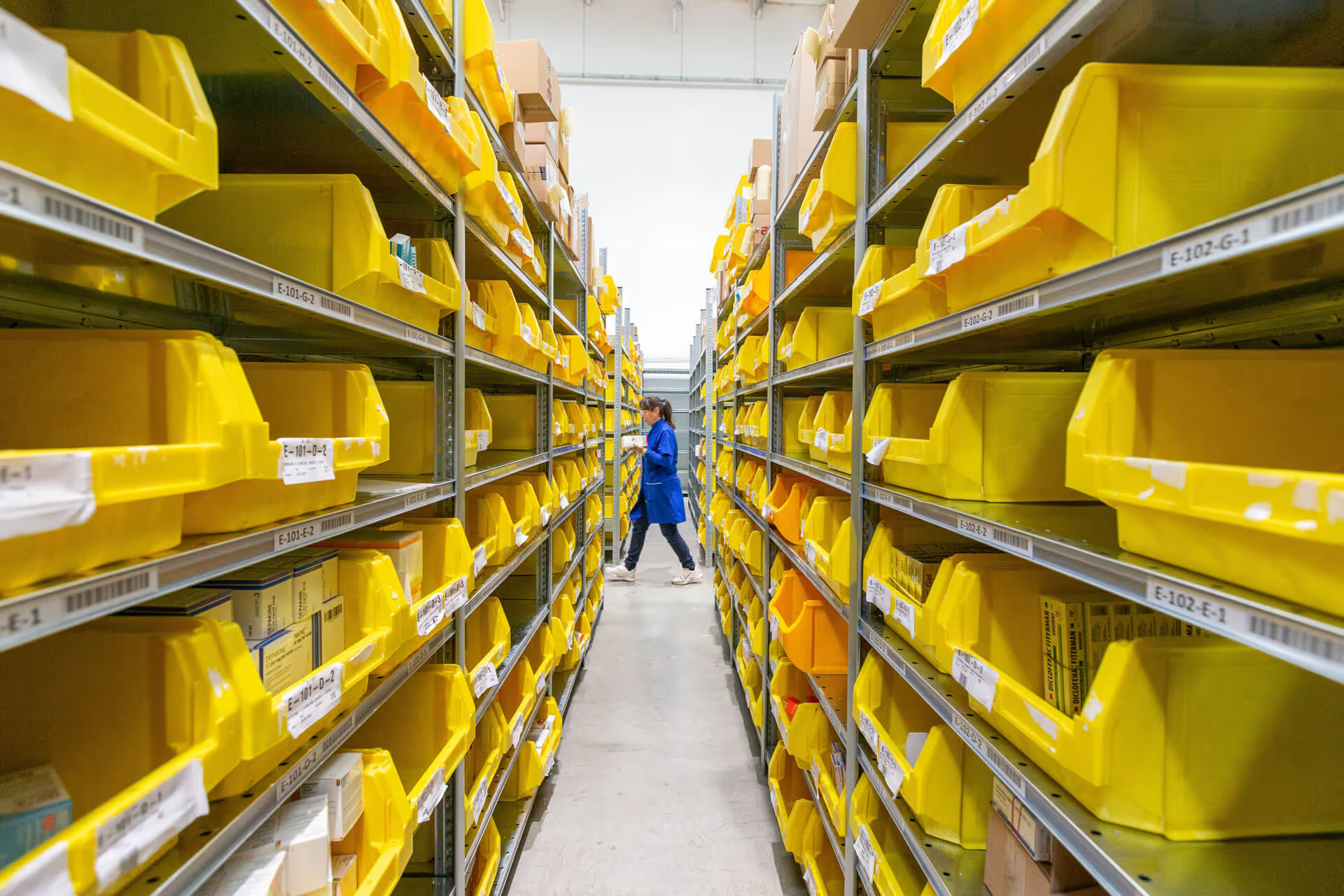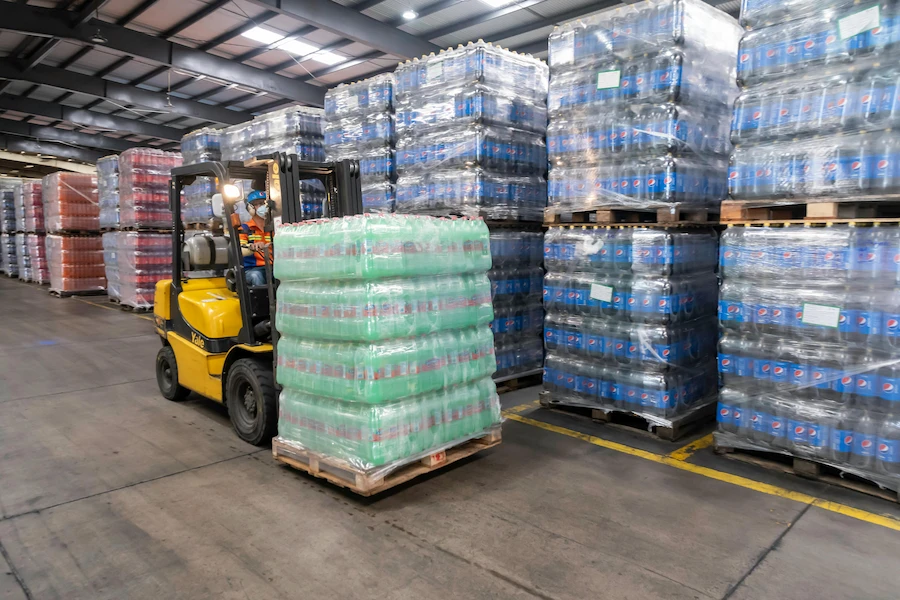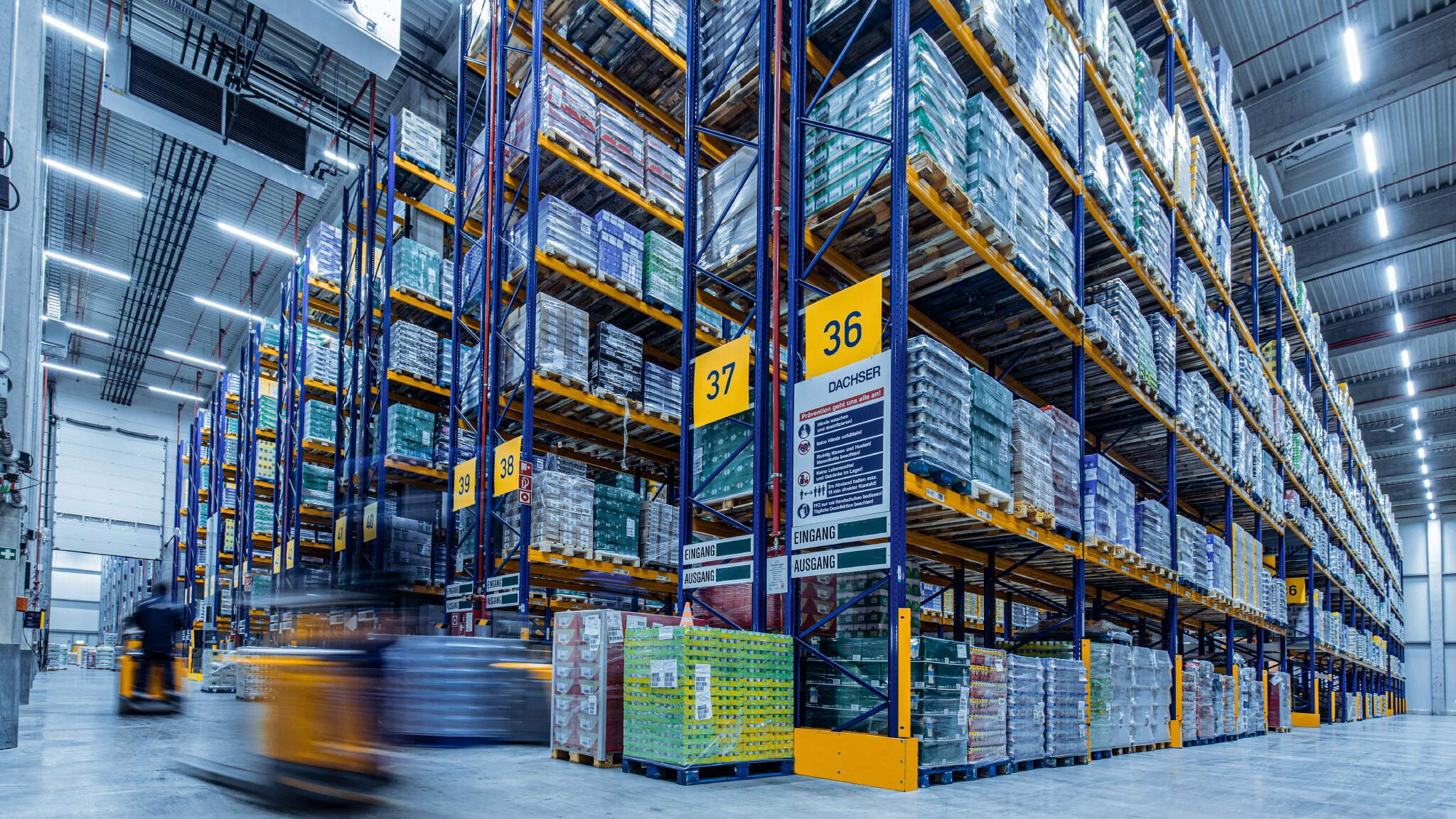Network Design and Warehouse Strategy: A Practical Playbook for Australia & New Zealand
Why this matters now
Across Australia and New Zealand, the ground keeps shifting: customer expectations are up, capital is tighter, labour is scarce, and transport costs won’t magically rewind. Meanwhile, service promises—next-day, two-day, click-and-collect—are judged in hours, not weeks. In that reality, two decisions dominate your cost-to-serve and your customer experience:
- Where you place your inventory and facilities (network design), and
- How those facilities actually run (warehouse strategy).
Get these two right and you absorb volatility, shorten lead times, and reduce cost. Get them wrong and you bake inefficiency into every order—no matter how slick your forecasting or ERP might be.
This article is a no-nonsense guide for ANZ leaders in retail, FMCG, manufacturing, healthcare, property-based services, and public sector supply chains. It lays out the steps, pitfalls, trade-offs, and decisions that matter—plus a pragmatic 90-day plan you can start tomorrow.
What do we mean by “network design” and “warehouse strategy”?
- Network design is the blueprint: how many DCs you need, where they should be, which customers they serve, which SKUs they hold, and how goods flow from suppliers to sites to customers. It weighs service time, freight cost, inventory investment, labour market realities, capex, and risk.
- Warehouse strategy is the operating model inside and around those buildings: the layout, storage media, automation, picking methods, workforce model, WMS/controls, and the playbook for growth and peak.
The two are inseparable. A network choice (say, consolidating from four DCs to two) collapses or multiplies options inside the shed (e.g., higher bay heights, more automation, expanded NDC/CDC roles, micro-fulfilment). Likewise, a warehouse strategy (e.g., goods-to-person, AMR clusters, voice picking) can unlock a broader network rethink.
Typical triggers to review your network in ANZ
- Growth outpacing your footprint; current DCs bursting at peak.
- Channel shift to eCommerce/marketplaces and store fulfilment.
- New product ranges (bulky goods, regulated items, cold chain).
- Lease expiries, rent rises, or changes to industrial zoning.
- Rising linehaul, last-mile, and inter-island costs.
- Supplier base changes (nearshoring, new ports of entry).
- Sustainability targets (Scope 1–3) and reporting requirements.
- Risk resilience (single-site dependence, disaster/ICT outages).
- M&A integration or divestment.
If any of these sound familiar, a structured network review pays for itself surprisingly quickly.
The five outcomes to design for
- Service: Promise what matters (and only what matters), then meet it reliably.
- Cost: Lowest total landed cost, not the cheapest line item.
- Resilience: Redundancy where it counts; fast failover paths.
- Sustainability: Real reductions in emissions and waste, not just offsets.
- Scalability: Seasonal and structural growth without re-building from scratch.
The data you actually need (and how “clean” it must be)
Perfect data doesn’t exist. “Right enough” does.
- Demand: 18–24 months of orders/shipments with postcode (AUS/NZ), order lines, weight/volume, service level (standard/express), channel.
- Supply: Supplier ship-from points, lead times, MOQs, inbound container data (port, frequency, weight/CBM).
- SKU attributes: Cube, weight, velocity, hazard, temperature, stacking.
- Transport tariffs: Linehaul, PUD/last-mile by zone/postcode, fuel levies, surcharges, inter-island legs.
- Facility costs: Rent, outgoings, energy, labour rates, shift structures, MHE/automation opex/capex.
- Operational performance: Pick rates, dock utilisation, dwell times, DIFOT.
- Constraints: Lease terms, racking heights, slab ratings, union/EA settings, curfews, port access.
Aim for consistency over perfection. Fill gaps with reasonable assumptions and validate the big levers with your ops and finance leads.
The method: how to run a proper network design (without getting lost)
Think in three loops: Understand → Explore → Decide.
1) Understand (where the money and time really go)
- Baseline cost-to-serve by product, channel, and region (AUS states and NZ North/South Island).
- Map actual flows: supplier → port → DC → customer/store.
- Identify bottlenecks (peak weeks, lane constraints, dock congestion).
- Define service promises by segment (don’t promise everything to everyone).
2) Explore (scenario design and pressure-testing)
- Facility count/location scenarios: 1 vs 2 vs 3+ DCs; AU-only vs AU+NZ; CDC+RDC models; cross-dock vs stockholding.
- Inventory posture: Centralised safety stock vs regional buffers; postponement; vendor-managed inventory; store backroom.
- Transport mix: Linehaul vs direct ship; milk-runs; air for premium lanes; inter-island staging points.
- Automation choices: Manual, mechanised, AMRs, shuttle, AS/RS, goods-to-person; “phase-in” paths that start small.
- Sustainability: Consolidation into fewer, greener buildings vs network spread; emissions per delivered order.
- Resilience: Fire/flood/ICT outage scenarios; how orders reroute.
Stress each scenario for peak, growth, and disruption—not just average weeks.
3) Decide (and commit to a roadmap)
- Land on the preferred option (or two) with a 10-line business case: service impact, capex/lease, operating cost, transport cost, inventory changes, emissions, risk rating, time to value, key assumptions, and top five risks.
- Build a phased roadmap: leases, design, procurement, implementation, data/tech uplift, change management.
- Set hard gates: stop/go criteria that keep the program honest.
Warehouse strategy: turning the blueprint into a working asset
A good warehouse strategy answers eight questions.
1) What work are we doing—really?
- Split the workload by unit of handling: pallets, cartons, eaches, kits, value-add, returns.
- Identify the few long tails that distort everything (bulky items, DGs, temp-controlled, secure lines).
2) What storage media and layout will we use?
- Reserve vs forward pick, racking types, bay heights, replenishment paths.
- Fast-mover zoning, velocity-based slotting, and “golden zones” for the 20% of SKUs that drive 80% of picks.
3) How will we pick?
- Person-to-goods (voice/RF, cart pick), zone pick/put-to-light, wave vs waveless, cluster/batch.
- Goods-to-person or AMR if the profile suits (eaches, multi-line orders, labour constraints).
4) How do we handle inbound and outbound?
- Cross-dock rules, ASN discipline, appointment windows, yard and dock scheduling, carrier staging.
5) What’s our returns and value-add plan?
- Dedicated returns cells, grading rules, refurb/repack, secondary markets where appropriate.
6) What tech underpins it?
- WMS at the core (tasking, labour management, slotting), with MFC/AMR/controls integrations via solid middleware.
- RF/voice and simple dashboards first; then get fancy.
7) How will the workforce run?
- Clear roles by zone, visual management, multi-skilling, shift patterns that match the demand curve (not the roster history).
- Safety by design: travel paths, charging bays, people-MHE separation.
8) How will we scale and improve?
- Design peaks into the layout (staging, additional packing benches, surge AMRs, short-term third-party space).
- A backlog of continuous improvements measured in seconds per unit and errors per thousand.
Automation: start with pen and paper, then power up
Automation isn’t a personality trait. It’s a financial decision.
- Good fits: stable each-picking at volume, limited labour pools, high real estate costs, repeatable tote/carton flows.
- Maybes: highly seasonal profiles (consider flexible AMR fleets), big SKU churn, products that defy totes.
- Cautions: bespoke controls that create vendor lock-in, under-baked WMS integrations, or layouts that kill future options.
If you do automate, build phase-in steps: manual → assisted (carts/voice) → AMR → GTP modules. Prove ROI at each stage.
Inventory and service: the backbone of your promise
- Safety stock follows variability and lead time; don’t hoard stock because the layout is poor. Fix the flow.
- Segmentation: treat A/B/C SKUs differently by geography and service promise.
- Postponement: late customisation near the customer can cut inventory while preserving choice.
- S&OP/IBP: your network only sings if demand and supply planning are in time with finance.
Transport realities in ANZ (and what to do about them)
- Distance and water: AUS is big; NZ has a strait. Inter-island and regional lanes often decide your node strategy.
- Carrier mix: balance integrators, nationals, regionals, and specialists; avoid single-carrier dependence for key lanes.
- Milk-runs and cross-dock: for B2B and store replen, these often beat direct shipping.
- Time windows: model promised delivery days per postcode, not just averages.
- Emissions: measure grams per shipment and reduce by smart consolidation, route design, and vehicle choice—not by wishful thinking.
Sustainability that actually reduces cost
- Consolidated, energy-efficient buildings (or well-tuned existing ones) often cut both emissions and opex.
- Better cube utilisation (inbound containers and outbound linehaul) reduces both fuel and freight bills.
- Smarter waste handling, right-sized packaging, and reusable transit media prevent money going in the skip.
- Supplier and carrier engagement: set targets you can verify (diversion rates, load factors, electric vehicle pilots where viable).
Risk and resilience: design it in, don’t bolt it on
- Redundancy: another site that can take 30–50% of volume in a pinch; mirrored carriers for critical lanes.
- Data resilience: WMS failover and offline pick capability; paper packs as a last resort.
- Supplier risk: multiple ports of entry, second sources for critical items.
- People risk: multi-skilling, cross-training, and a healthy bench of trained casuals at peak.
- Event playbooks: fire, flood, cyber, pandemic—have a laminated plan, not just a folder on SharePoint.
The business case: speak Finance, not folklore
- Compare scenarios on NPV, payback, and sensitivity (demand +/-, freight +/-, wage inflation).
- Separate one-off costs (racking, automation, move costs) from ongoing (rent, labour, utilities, maintenance, carrier contracts).
- Be explicit about assumptions (growth, service promise, wage rates, fuel).
- Don’t bury the trade-offs: a 2-DC model may raise inventory but slash transport; or vice versa.
- Include a do-nothing baseline. It’s often the most expensive option once risk and service erosion are counted.
Common pitfalls (so you can sidestep them)
- Chasing average cost and ignoring tail regions or inter-island realities.
- Over-automating early without proving the manual playbook first.
- Designing around today’s exceptions rather than the repeatable core.
- Forgetting the calendar: peak, promotions, launches, and holiday shipping.
- Under-cooking WMS and data then blaming the people.
- No plan for ramp-up: you’ve built the shed, but the first 120 days are chaos.
- One-carrier dependence on critical lanes.
- Not securing leases with options that match your growth and risk horizons.
A realistic 90-day plan (to get momentum without drama)
Days 1–15: Mobilise & baseline
- Confirm scope and goals, set a governance rhythm, and gather the data.
- Build a first-cut cost-to-serve map and a service-promise matrix by region and channel.
Days 16–45: Scenario design
- Run two to four credible network scenarios (e.g., 1 DC AU + 1 DC NZ; 2 DC AU + 1 cross-dock NZ; single AU CDC with NZ 3PL).
- Sketch warehouse options per scenario (manual vs assisted vs AMR) and the labour model.
- Check the numbers with Finance; test assumptions with Operations.
Days 46–60: Pressure-test
- Stress scenarios for peak and disruption; check lease markets and labour availability in candidate locations.
- Shortlist to one preferred and one back-up scenario.
Days 61–90: Roadmap & pre-procurement
- Draft the investment case and phasing plan.
- Prepare market packs for property, automation/MHE, 3PLs/carriers as needed.
- Lock the change plan (comms, training, hiring, S&OP cadence) and data/tech uplift plan (WMS, carrier interfaces, BI).
Outcome: a board-ready pathway with options, timelines, costs, and risks you can live with.
Governance that keeps the design honest
- Monthly design & performance forum: operations, transport, planning, finance, IT, safety.
- KPIs that link to the design: DIFOT by promise, orders picked per labour hour, pick accuracy, cube utilisation, emissions per order, cost-to-serve trend.
- Change control: any major product or channel shift triggers a mini review; don’t let drift undo the strategy.
- Post-implementation reviews at 90 and 180 days, then annually.
How Trace Consultants can help
Trace Consultants partners with Australian and New Zealand organisations to make network design and warehouse strategy clear, quantified, and implementable—without over-engineering or overselling. We avoid hypothetical case studies and stick to the work that moves the needle.
Here’s how we typically support:
- Rapid diagnostic & cost-to-serve: a short, sharp review of demand flows, service promises, and cost to reveal the two or three levers that matter most.
- Scenario modelling: pragmatic network options (facility count, locations, inventory posture) with transport and inventory impacts, emissions estimates, and risk stress-tests.
- Warehouse strategy & design: layout options, storage media, process design, and “automation-when-ready” plans; workforce and safety baked in.
- Technology enablement: WMS selection/advice, integration approach, data standards for slotting, tasking, and performance visibility.
- Investment case & roadmap: board-ready documents with NPV, sensitivity analysis, timelines, and phasing that respects leases and seasons.
- Procurement & implementation support: property searches, 3PL and carrier tenders, MHE/automation market engagement, and steady-hand PMO through go-live and ramp-up.
If you need an objective view—one that balances service, cost, resilience, sustainability, and practicality—Trace can be your co-pilot from first sketch to steady state.
Frequently asked questions (the ones leaders actually ask)
Q: Is a two-DC Australian model always cheaper than one?
Not always. It depends on your demand map, last-mile rules, and transport tariffs. Sometimes a single CDC with strong cross-dock logic and great carriers wins on cost while still hitting service.
Q: Should we put a DC in New Zealand?
If you have meaningful NZ demand and service promises tighter than inter-island + customs can support, a local NZ node (stockholding or cross-dock) often pays its way. If demand is small or bulky, consider a 3PL solution staged out of Auckland or Christchurch.
Q: Do we need automation?
Maybe. If you run heavy each-picking at volume in a tough labour market, yes—start small and scale. If your profile is pallet and carton with seasonal spikes, disciplined manual processes may outperform until you stabilise growth.
Q: What about micro-fulfilment in stores?
Great where foot traffic, top-line growth, and delivery promises justify it. Less great if it complicates labour and inventory for marginal service gains. Pilot before you proliferate.
Q: How often should we revisit the design?
At least annually at a light-touch level, and formally whenever products, channels, or leases change materially.
A quick checklist you can copy into your plan
- Confirm service promises by segment and region.
- Build a 12-month cost-to-serve and demand heatmap.
- Model at least two credible network scenarios.
- Pick a warehouse strategy that matches the profile and the people you can hire.
- Pressure-test peak, disruption, and inter-island realities.
- Align WMS and carrier tech early; don’t bolt it on.
- Write the investment case with explicit assumptions.
- Set a 90-day mobilisation plan with hard gates.
- Establish ongoing governance and improvement cadences.
Final word
Network design and warehouse strategy aren’t “one and done.” They’re living decisions that should evolve with your products, channels, and customers. In Australia and New Zealand—where distance, islands, and labour markets can make or break your promise—clarity and pragmatism win. Build the blueprint, prove it in numbers, design an operation that people can run, and commit to a cadence of review and improvement.
If you’d like an experienced, independent partner to help frame the options, crunch the numbers, and deliver the change, Trace Consultants can help. We’ll keep it practical, transparent, and focused on outcomes your board, your team, and your customers will recognise.















